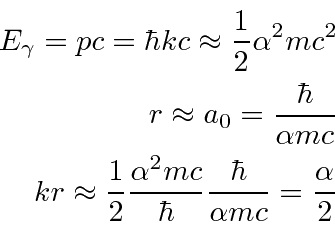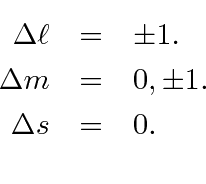Next: Beyond the Electric Dipole Up: Quantum Theory of Radiation Previous: Emission and Absorption of Contents



The approximation that
![]() is a very good one and is called the
electric dipole or E1 approximation.
We previously
derived the E1 selection rules.
is a very good one and is called the
electric dipole or E1 approximation.
We previously
derived the E1 selection rules.

The general E1 decay result depends on photon direction and polarization. If information about angular distributions or polarization is needed, it can be pried out of this formula.

Summing over polarization and integrating over photon direction, we get a simpler formula that is quite useful
to compute the decay rate from one initial atomic state to one final atomic state.

For single electron atoms, we can sum over the final states with different
![]() and get a formula only requires us to do a radial integral.
and get a formula only requires us to do a radial integral.
